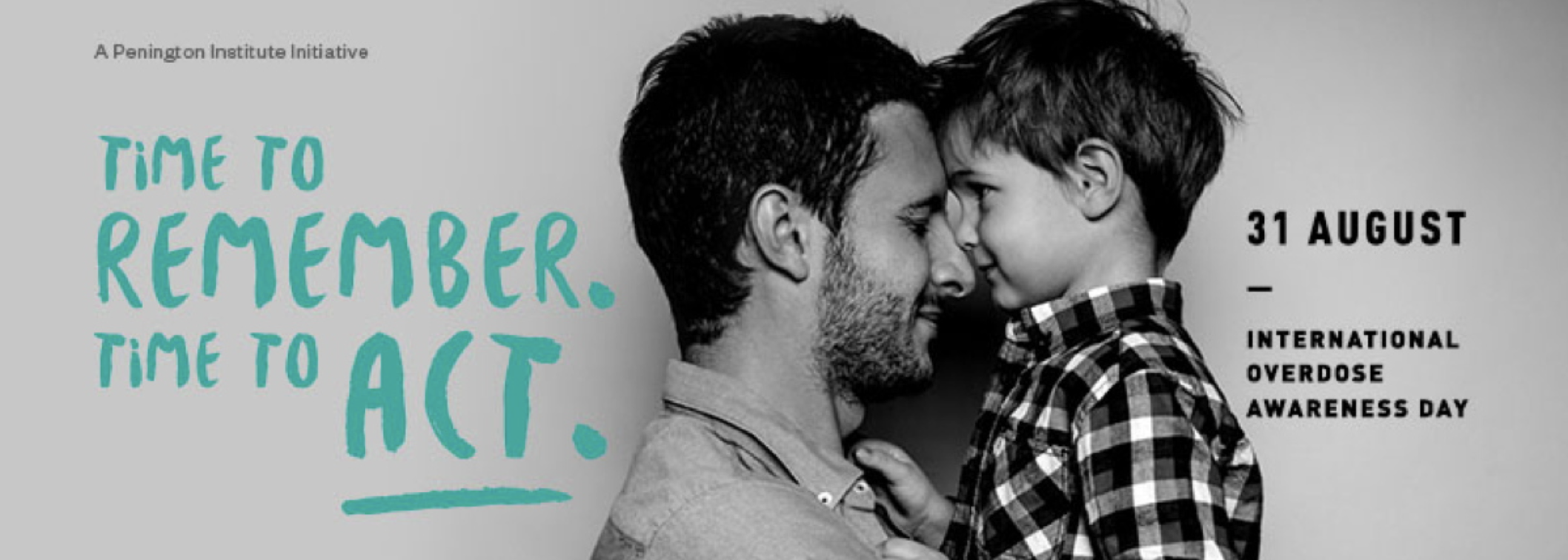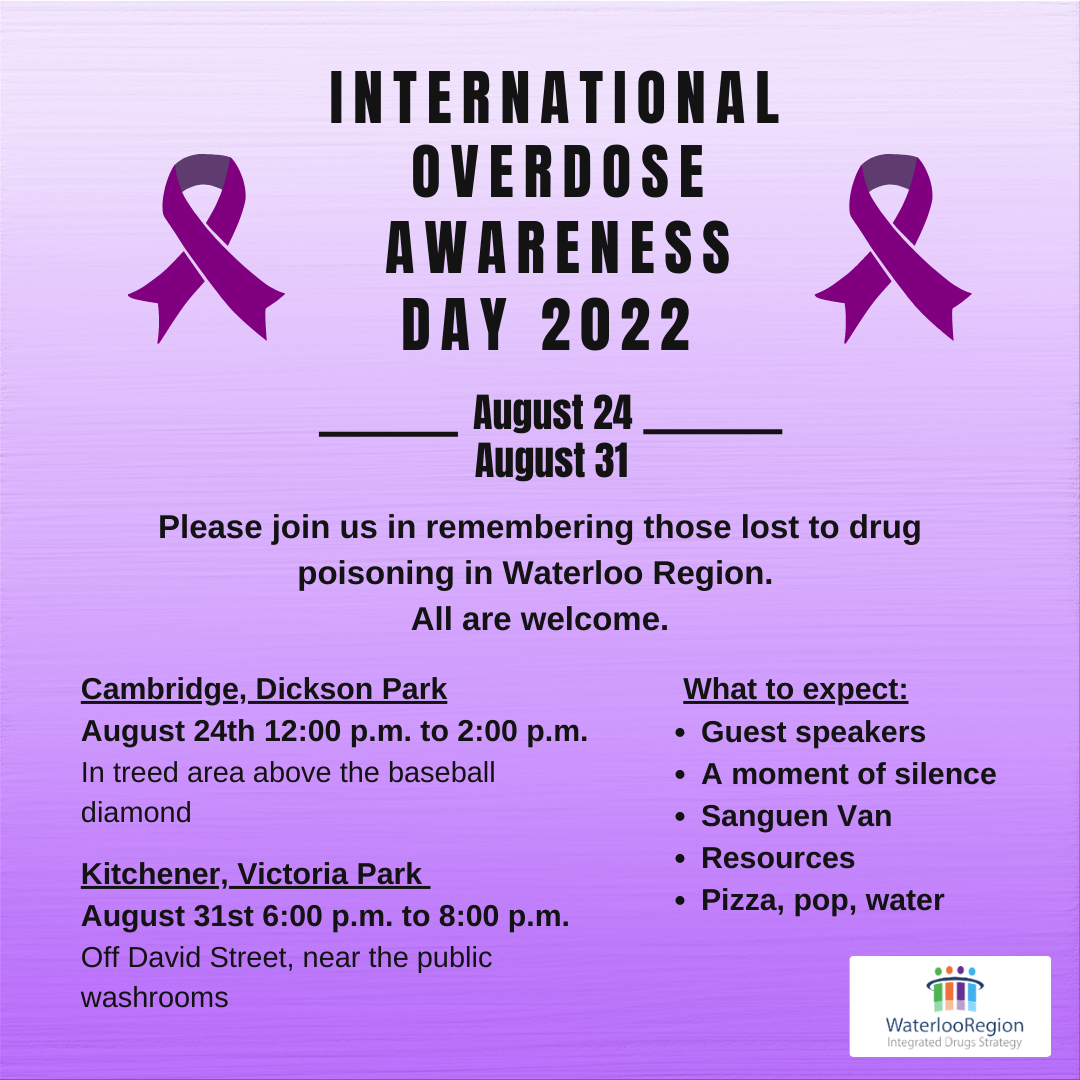5 Things To Remember This International Overdose Awareness Day
2023 UPDATE:
For recent stats and information, explore the resources below.
Fentanyl Awareness Guide for Parents, Teens, and College Students, CLICK HERE.
History of Substance Abuse and Addiction, CLICK HERE.
continue to blog post
International Overdose Awareness Day is the world’s largest annual campaign to end overdose, remember those who have died without stigma, and acknowledge the grief of the families and friends left behind.
On August 31st, join us as we take part in International Overdose Awareness Day.
International Overdose Awareness Day was initiated in 2001 by Sally J Finn at The Salvation Army in St Kilda, Melbourne. In the beginning, local organizations and community members held events to raise awareness and commemorate those who have been lost to drug overdose. In 2012, International Overdose Awareness Day was coordinated by the not-for-profit Australian public health organization Penington Institute, who transformed the day into the international movement it is today.
Substance Use describes the use of any psychoactive substance, which covers all legal and illegal drugs, including alcohol, opioids, methamphetamines and cannabis.
A Substance Use Disorder is a health condition. It is diagnosed when a person’s substance use leads to health issues or problems at home, school, or work. A substance use disorder can be mild, moderate or severe.
5 Things To Remember This International Overdose Awareness Day
1. Stigma Kills
The stigma surrounding substance use is one of the biggest barriers for people recovering from or seeking help for substance use disorders.
8 in 10 Canadians with a substance use disorder say they experienced barriers to recovery, including stigma. 1
Almost half of Canadians in recovery from a substance use disorder experience stigma when in active addiction. 2
Stigma is not simply semantics. Things like derogatory language, misinformation, and negative behaviour contribute to the shame and belittlement of those struggling with addiction. Normalized stigma affects the minds of healthcare providers, law enforcement officers, and government officials. A negative cycle of behaviours and attitudes toward addiction on an individual level leads to the isolation and marginalization of people who use substances on a systemic level.
Pennington Institute, International Overdose Awareness Day 2022. Logo retrieved from: https://www.overdoseday.com/campaign-resources/ Campaign resources are available to help share the message with friends, family, colleagues and your community to help prevent overdose.
One of the best things you can do to effect change and advocate for those struggling with addiction is to modify your language. Harmful language and attitudes toward people who use substances can look like…
Equating a person’s identity with substance use.
Belittling a person’s value or contribution to society based on their use of substances.
Dehumanization of a person through labels and generalizations.
Let’s change the conversation around substance use!
Stigmatizing language is often hurtful and disempowering to vulnerable people. Studies show that using words like “abuse” or “addict” can create negative opinions that lead to the refusal of healthcare services. The use of person-first and non-stigmatizing language changes public perception, encourages people to seek help, generates further action and access to quality services, and contributes to the creation of unbiased, effective policy. 3
For more advice on how to use non-stigmatizing language, click here.
2. Overdose Is Preventable
Like many countries, opioid-related accidents account for the majority of drug-induced deaths in Canada. A total of 7,560 apparent opioid toxicity deaths occurred in 2021. This is approximately 21 deaths per day. This number is up from years prior to the pandemic where there were between 8 (January - December 2016) and 12 (January - December 2018) opioid-related deaths per day. 4
Opioids is an umbrella term for natural or synthetic drugs that are derived from (or related to) the opium poppy, the species of plant from which both opium and poppy seeds derive. 5
Pennington Institute, International Overdose Awareness Day 2022. Image retrieved from: https://www.overdoseday.com/campaign-resources/ Campaign resources are available to help share the message with friends, family, colleagues and your community to help prevent overdose.
Opioid overdose is preventable through education, resources, and action. When responding to overdose one of the greatest tools in our arsenal is Naloxone, a fast-acting drug used to temporarily reverse the effects of an opioid overdose. When used correctly, naloxone can restore breathing within 2 to 5 minutes. 6
It is imperative that we use International overdose awareness day to stimulate discussion around overdose prevention and drug policy.
Overdose is often witnessed; the education and distribution of Naloxone Kits to the friends and family of those who use substances saves lives around the world each and every day. In fact, the Ontario Provincial Police reported that in a two-year span over 100 lives were saved via Naloxone use by Ontario Police Officers alone. 7
The relationship between substance use and experiences of homelessness is complex. The use and distribution of Naloxone by organizations that work directly with marginalized groups, like the unhoused population, also plays a large role in saving lives. oneROOF Youth Services currently offers Naloxone Distribution and Safe Needle/Syringe Distribution programming through our Mental Health & Addictions department. Learn more.
An appropriate action can save a life! Be prepared. Learn more about overdose response, here.
3. Stop, Listen, Amplify
A large part of International Overdose Awareness Day is providing the opportunity for people to publicly mourn loved ones in a safe environment, some for the first time without feeling guilt or shame. It is equally important that we use this day to spread a message of love and support to those formerly involved or still involved in substance use.
1 in 10 Canadians experience substance use problems today. 8
Young people aged 15 to 24 are more likely to experience mental illness and/or substance use disorders than any other age group. 9
In 2021, over 7500 people died of opioid overdose in Canada. 10
This past year the people of Waterloo Region took action, displaying the magnitude of overdose-related deaths in the community through a stunning event in Victoria Park. To mark International Overdose Awareness Day, hundreds of wooden markers stretched across the park, representing each person who died of an overdose in the region over the past few years. The sombre vigil was a welcomed event that shined a light on drug-related issues and policy; pushing messages of harm reduction far and wide, with Naloxone kits available for free from participating pharmacies throughout the region.
International Overdose Awareness Day marked with sombre display in Kitchener’s Victoria Park. Image retrieved from: https://www.therecord.com/news/waterloo-region/2021/08/31/remembering-people-lost-to-overdose.html (Kitchener Record Article By Johanna Weidner, Record Reporter
Remembering those who have died or suffered permanent injury due to overdose is a vital part of International Overdose Awareness Day. It is important to open up the conversation to overdose survivors, victims of drug use, and loved ones in mourning. On August 31st, turn your attention to these people; stop, listen, and amplify their voices so we can all learn and remember alongside them.
If you would like to commemorate someone, you can add a public tribute to the official International Overdose Awareness Day site, here. Join the conversation online by using the hashtag #OverdoseAware or #EndOverdose on your photos and posts to help build momentum for the day and remember those we have lost.
4. Change Is Happening
The introduction of Naloxone Distribution programs and Safe Consumption Sites to Canadian cities has drastically improved the lives of many.
Safe Consumption Sites provide a safe, clean space for people to bring their own drugs to use, in the presence of trained staff.
Supervised consumption saves lives and benefit communities, preventing accidental overdoses and reducing the spread of infectious diseases, such as HIV. They have been proven to lessen mortality rates, emergency service calls, and hospitalizations; saving lives and taxpayer dollars.
Canadian Safe Consumption Sites saw around 2 million visits between 2017 and 2019.
In early 2020, with just 39 sites operating, it was estimated that around 3,000 visits took place every day. The busiest Safe Consumption Sites in Canada saw upwards of 500 visits each day. 11
For more information on supervised consumption sites, please visit Health Canada’s Supervised Consumption Sites and Services page.
“People lost due to overdose are not just statistics – they are family members and friends. Through International Overdose Awareness Day, we drive an overdose awareness campaign that includes community education and awareness-raising activities.”
— International Overdose Awareness Day, an initiative of Penington Institute.
5. You Can Help
Get Involved This International Overdose Awareness Day!
Here are some ways you can get involved this year:
Attend An Event: Like Waterloo Region’s 2021 Victoria Park Event, there may be an event in your community to honour International Overdose Awareness Day. See image below for local event information.
Post A Tribute: If you have a story to share, post a tribute on the official International Overdose Awareness Day website, here.
Show Your Support: Wear a badge, wristband or lanyard to show your support for International Overdose Awareness Day. Buy your badge, wristband or lanyard, here.
Get Social: Follow International Overdose Awareness Day on Twitter, Facebook and Instagram. Share your knowledge and stories using the hashtag #OverdoseAware or #EndOverdose
Donate: Consider supporting International Overdose Awareness Day with a donation, or donate to a Safe Consumption Site or Naloxone Distribution program near you.
Thank you for taking the time to learn with us. Explore more about oneROOF Youth Services or check out our Mental Health & Addictions department, here.
-
McQuaid, R.J., Malik, A., Moussouni, K., Baydack, N., Stargardter, M., & Morrisey, M. (2017). Life in recovery from addiction in Canada. Ottawa, Ont.: Canadian Centre on Substance Use and Addiction. Retrieved from www.ccsa.ca/sites/default/files/2019-04/ CCSA-Life-in-Recovery-from-Addiction-Report-2017-en.pdf
Pearson, C., Janz, T., & Ali, J. (2013). Mental and substance use disorders in Canada. Health at a Glance. Statistics Canada Catalogue no. 82-624-X. Retrieved from www150. statcan.gc.ca/n1/pub/82-624-x/2013001/article/11855-eng.htm
Kelly, J.F. & Westerhoff, C.M. (2010). Does it matter how we refer to individuals with substance-related conditions? A randomized study of two commonly used terms. International Journal of Drug Policy, 3, 202–207
Special Advisory Committee on the Epidemic of Opioid Overdoses. Opioid- and Stimulant-related Harms in Canada. Ottawa: Public Health Agency of Canada; June 2022. https://health-infobase.canada.ca/substance-related-harms/opioids-stimulants
International Overdose Awareness Day Materials (https://www.overdoseday.com/wp-content/uploads/IOAD-Factsheets_A4-1.pdf)
Government of Canada https://www.canada.ca/en/health-canada/services/publications/healthy-living/naloxone-save-a-life-fact-sheet.html
Ontario Provincial Police. Retrieved from the Canadian Mental Health Association: https://ontario.cmha.ca/news/opp-have-saved-more-than-100-lives-with-naloxone/#:~:text=Since%202017%2C%20the%20Ontario%20Provincial,released%20on%20the%20OPP's%20website.
Canadian Centre on Substance Use and Addiction. (2017). When it comes to substance us disorders words matter. (Fact sheet.) Ottawa, Ont.: Author. Retrieved from www.ccsa. ca/sites/default/files/2019-04/CCSA-Substance-Use-Disorders-Words-Matter-Fact-Sheet2017-en.pdf
Pearson, Janz & Ali (2013). Health at a glance: Mental and substance use disorders in Canada. Statistics Canada Catalogue no. 82-624-X. Retrieved from https://www.camh.ca/en/driving-change/the-crisis-is-real/mental-health-statistics
Special Advisory Committee on the Epidemic of Opioid Overdoses. Opioid- and Stimulant-related Harms in Canada. Ottawa: Public Health Agency of Canada; June 2022. https://health-infobase.canada.ca/substance-related-harms/opioids-stimulants
Canadian Supervised Consumption Sites Statistics — 2017 to 2019. Retrieved from: https://health-infobase.canada.ca/datalab/supervised-consumption-sites-blog.html?=undefined&wbdisable=true






